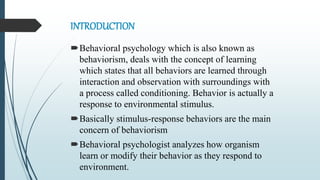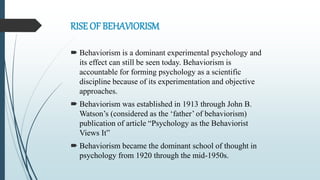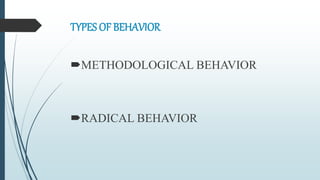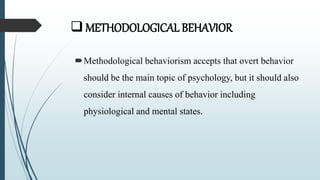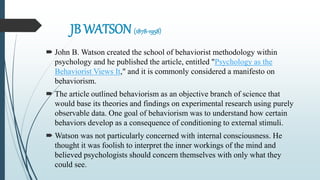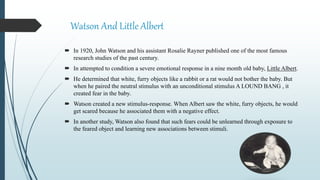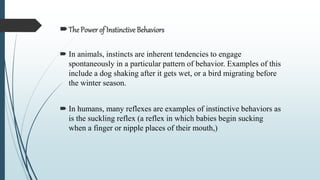Behaviorism is a school of psychology that focuses on observable behaviors and reactions to stimuli rather than internal mental states. Some key contributors to behaviorism include Ivan Pavlov, who discovered classical conditioning through his experiments with dogs; John B. Watson, who established behaviorism as a scientific approach and conducted experiments on conditioning with infants; and Edward Thorndike, who formulated the law of effect and conducted puzzle box experiments on animal learning. Behaviorism became a dominant approach in psychology from the 1920s through the 1950s and focused on stimulus-response learning through conditioning.

